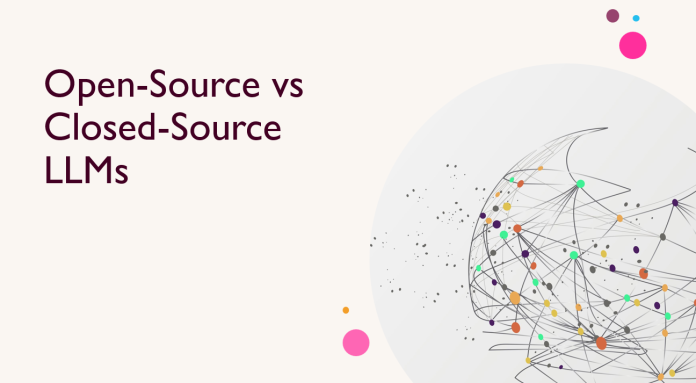The Future of Large Language Models: Open Source vs. Closed Source
Introduction
Large Language Models (LLMs) have become a cornerstone of artificial intelligence, shaping industries, revolutionizing workflows, and influencing everything from customer service to creative writing. As LLMs become more powerful, the debate over open source vs. closed source models has intensified.
Exploring the Arguments
This debate goes beyond technical preferences—it’s about innovation, accessibility, security, ethics, and the future of AI. Let’s explore the arguments in depth.
Understanding Large Language Models
Large Language Models, or LLMs, are advanced AI systems designed to process and generate human-like text. They are built using deep learning techniques, particularly transformer architectures, and are trained on massive datasets that include books, articles, websites, and other text-based sources. These models are capable of understanding context, predicting text, and performing a wide range of language-related tasks.
In simpler terms, LLMs are like virtual assistants that can generate text, answer questions, summarize information, translate languages, and even assist with coding.
Key Features of LLMs
- Training on Data: LLMs are trained on diverse datasets to learn grammar, syntax, and contextual meanings.
- Transformer Architecture: LLMs rely on transformers to understand relationships between words in a sentence.
- Tokenization: Text is broken into smaller units called tokens for processing.
Types of LLMs
- GPT Models: OpenAI’s series of models known for generating human-like text.
- BERT: A model by Google designed for understanding the context of words in sentences.
- BLOOM: An open-source model focused on collaboration and innovation.
- T5: A text-to-text transformer model used for tasks like translation and summarization.
Advantages of LLMs
- Versatility: LLMs can be fine-tuned for specific tasks.
- Efficiency: Automating language-based tasks saves time and resources.
- Scalability: LLMs can process vast amounts of data for large-scale applications.
The Debate: Open Source vs. Closed Source
At the heart of this debate are two approaches to building and deploying LLMs: open source and closed source. Let’s delve into the arguments for each.
Open Source LLMs
Open-source LLMs allow anyone to access their code, algorithms, and sometimes even the data used to train them. These models are built on the principles of transparency and collaboration.
Advantages
- Accessibility: Open-source models democratize AI.
- Customization: Organizations can modify these models to meet specific needs.
- Faster Innovation: With a global community contributing to improvements.
- Transparency: Open-source models allow users to see how the model works.
Challenges
- Resource Demands: Training and running LLMs require immense computing power.
- Risk of Misuse: Open access means bad actors can use these tools for harmful purposes.
- Limited Support: Users may have to rely on community forums for help.
Closed Source LLMs
Closed-source LLMs are developed and maintained by companies like OpenAI and Google. These companies keep their models’ inner workings private, offering them as paid services.
Advantages
- Polished Experience: Closed-source models offer user-friendly interfaces.
- Security: By restricting access, companies can prevent misuse.
- Reliable Support: Users can rely on professional customer service.
- Profitability: Closed-source models generate revenue for further development.
Challenges
- Lack of Transparency: Users can’t see how these models work.
- High Costs: Subscription fees and usage limits make these models inaccessible.
- Monopoly Risks: A few corporations controlling AI innovation can limit diversity.
Hybrid Models: Balancing Innovation and Safety
Some companies are exploring hybrid approaches that aim to strike a balance between open-source and closed-source models. These models combine transparency and collaboration with safeguards and reliability.
Examples of Hybrid Approaches
- Meta’s LLaMA: A partially open-source model with restricted access.
- Partially Open Models: Companies release parts of their models while keeping some components proprietary.
Key Features of Hybrid Approaches
- Transparency with Guardrails: Hybrid models promote transparency with usage restrictions.
- Selective Accessibility: Access to hybrid models is restricted based on user credentials.
- Community Engagement with Corporate Oversight: Companies invite external input while maintaining control.
Future Trends and Recommendations
Global Regulations
Regulations around AI development are expected to increase, focusing on transparency, accountability, and ethical standards.
Hybrid Models
Hybrid approaches that blend open-source and closed-source elements are likely to become more prevalent.
Community Collaboration
Open-source communities will continue to drive innovation in AI, pushing boundaries and fostering inclusivity.
FAQ
What are Large Language Models (LLMs)?
LLMs are advanced AI systems designed to process and generate human-like text for various tasks.
What are the key differences between open-source and closed-source LLMs?
Open-source LLMs are accessible to all, promote innovation, but risk misuse. Closed-source LLMs offer polished experiences, security, but lack transparency.
How can companies balance innovation and safety in LLM development?
Companies can adopt hybrid models that combine transparency with safeguards, ensuring responsible usage.
Conclusion
The future of AI and Large Language Models hinges on finding a balance between open source and closed source approaches. Collaboration between stakeholders is key to creating an AI ecosystem that benefits everyone.


